Table of Contents
Are you looking for a challenging and effective way to strengthen your core? Look no further than calisthenics core workout. Calisthenics is a form of exercise that uses only your body weight, making it a great option for people of all fitness levels. And because calisthenics exercises can be done anywhere, they're perfect for people who are short on time or who don't have access to a gym. On our website Kizworld, we have a variety of calisthenics core workout that you can try. Whether you're a beginner or a seasoned pro, we have something for everyone. So what are you waiting for? Give calisthenics core workout a try today and see how quickly you can get results!
Calisthenics Core Workout: The Ultimate Guide to Building a Strong Core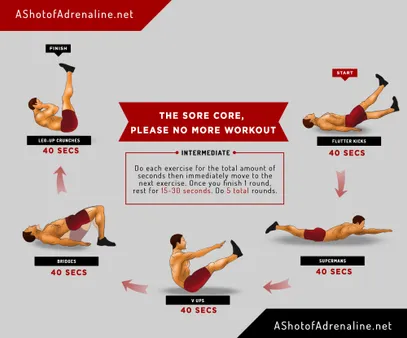
Benefit | Description |
|---|---|
Improved posture | Calisthenics core exercises help strengthen the muscles that support your spine, leading to better posture. |
Reduced back pain | A strong core can help stabilize your spine and reduce the risk of back pain. |
Enhanced athletic performance | A strong core is essential for many athletic activities, such as running, jumping, and throwing. |
Improved balance and coordination | Calisthenics core exercises can help improve your balance and coordination by strengthening the muscles that control your core. |
Increased calorie burn | Calisthenics core exercises are a great way to burn calories and lose weight. |
I. Calisthenics Core Workout: Engage Your Core
Master the Basics: Essential Calisthenics Core Exercises
Embark on your calisthenics core workout journey by mastering the foundational exercises that will ignite your core muscles. Begin with the classic plank, holding your body in a straight line from head to heels, engaging your abs and glutes. Progress to side planks, targeting your obliques and enhancing your balance. Don't forget the Russian twist, a dynamic exercise that strengthens your core and improves rotational stability.
For a comprehensive core workout, incorporate leg raises, challenging your lower abs and hip flexors. To further intensify your routine, try bicycle crunches, engaging multiple muscle groups simultaneously. Remember, consistency is key – aim for regular calisthenics core workouts to witness significant results.
Benefits of Calisthenics Core Exercises
Calisthenics core exercises offer a myriad of benefits that extend beyond aesthetics. A strong core enhances your posture, reducing the risk of back pain and improving your overall physical presence. It also plays a crucial role in athletic performance, providing stability and power for various movements.
Furthermore, a strong core improves balance and coordination, making you more agile and graceful in your daily activities. Additionally, calisthenics core exercises contribute to increased calorie burn, aiding in weight management and overall fitness goals.
Benefit | Description |
|---|---|
Improved posture | Calisthenics core exercises help strengthen the muscles that support your spine, leading to better posture. |
Reduced back pain | A strong core can help stabilize your spine and reduce the risk of back pain. |
Enhanced athletic performance | A strong core is essential for many athletic activities, such as running, jumping, and throwing. |
Improved balance and coordination | Calisthenics core exercises can help improve your balance and coordination by strengthening the muscles that control your core. |
Increased calorie burn | Calisthenics core exercises are a great way to burn calories and lose weight. |
Calisthenics Core Workout: Engage Your Core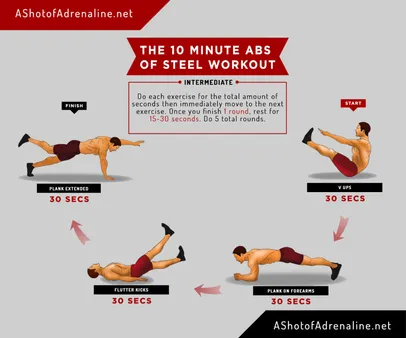
II. Intensify Your Calisthenics Core Workout with Advanced Exercises
Elevate Your Calisthenics Core Routine
Take your core workout to the next level with advanced calisthenics exercises. Engage your core muscles more deeply and challenge your limits to achieve optimal results. These advanced movements will fire up your core, enhancing stability and athleticism.Related: Master the Impressive Muscle-Up: Step-by-Step Guide
Dragon Flag: Core Control and Strength Unleashed
Engage your entire core with the challenging Dragon Flag exercise. This advanced move targets your abs, lower back, and hips, developing exceptional core strength and stability. Perform this exercise with precision to maximize its benefits and witness the transformation of your core.
Name | Description | Difficulty |
|---|---|---|
Dragon Flag | Advanced core exercise targeting abs, lower back, and hips | Hard |
L-Sit | Advanced core exercise focusing on isometric strength | Hard |
Planche | Advanced core exercise requiring exceptional strength and balance | Extreme |
L-Sit: Isometric Core Domination
Challenge your core's endurance with the L-Sit. Hold an L-shaped position, suspending your body weight on your hands. Engage your abs, thighs, and glutes to maintain this isometric position, maximizing core stability and strength.Related: Unlocking Gymnastics Mastery: A Beginner's Guide
Intensify Your Calisthenics Core Workout with Advanced Exercises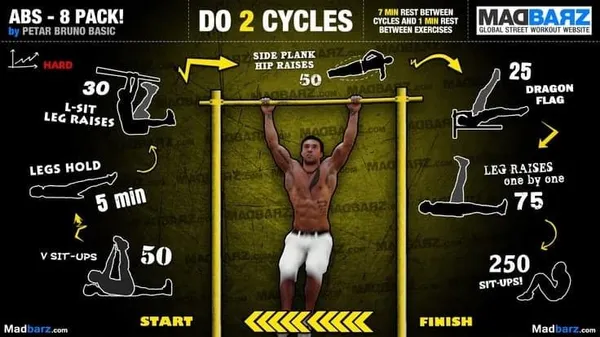
III. Unleash the Power of Planking Variations for Core Strength
Variations of the Traditional Plank
Plank variations are a fantastic way to strengthen your core and improve your overall fitness. The traditional plank is a great starting point, but there are many variations that can challenge your core even more.
- Side plank: This variation targets the obliques, which are the muscles on the sides of your waist. To do a side plank, lie on your side with your legs extended and your feet together. Prop yourself up on your elbow and lift your hips off the ground so that your body forms a straight line from your head to your heels.
- Reverse plank: This variation targets the muscles on the back of your body, including the glutes, hamstrings, and lower back. To do a reverse plank, sit on the ground with your legs extended and your feet together. Place your hands behind you on the ground and lift your hips off the ground so that your body forms a straight line from your head to your heels.
- Elevated plank: This variation makes the traditional plank more challenging by elevating your feet. To do an elevated plank, place your feet on a bench or platform and hold the plank position as described above.
- Weighted plank: This variation adds weight to the traditional plank, making it even more challenging. To do a weighted plank, place a weight on your back or hold a dumbbell in each hand.
Benefits of Planking Variations
Planking variations offer a number of benefits, including:
- Strengthened core: Planking variations strengthen the muscles in your core, which can help improve your posture, balance, and stability.
- Reduced back pain: A strong core can help to stabilize your spine and reduce the risk of back pain.
- Improved athletic performance: A strong core is essential for many athletic activities, such as running, jumping, and throwing.
- Enhanced balance and coordination: Planking variations can help improve your balance and coordination by strengthening the muscles that control your core.
- Increased calorie burn: Planking variations are a great way to burn calories and lose weight.
Tips for Doing Planking Variations
Here are a few tips for doing planking variations:
- Start slowly and gradually increase the duration of your planks. If you're new to planking, start by holding each plank for 30 seconds and gradually increase the time as you get stronger.
- Keep your core engaged throughout the entire plank. Don't let your lower back arch or your hips sag.
- Breathe deeply and steadily. Don't hold your breath while you're planking.
- Listen to your body and stop if you feel any pain. If you experience any pain while doing a planking variation, stop immediately and consult with a doctor or physical therapist.
Unleash the Power of Planking Variations for Core Strength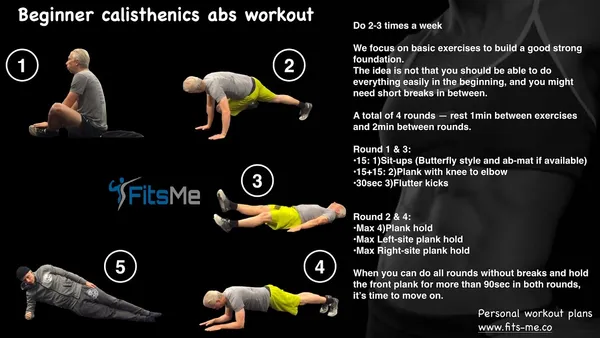
IV. Dynamic Core Exercises: The Key to Functional Fitness
Dynamic core exercises are a great way to improve your core strength and stability. They are also a great way to improve your balance and coordination. Dynamic core exercises involve moving your core in different directions, which helps to strengthen the muscles that support your spine and pelvis. This can help to improve your posture and reduce your risk of back pain.
There are many different types of dynamic core exercises. Some of the most common include:
- Planks
- Side planks
- Russian twists
- Leg raises
- Crunches
You can do dynamic core exercises with or without weights. If you are new to dynamic core exercises, it is best to start with bodyweight exercises. Once you have mastered the basics, you can add weight to increase the challenge.
Dynamic core exercises are a great way to improve your overall fitness. They are a safe and effective way to strengthen your core, improve your balance and coordination, and reduce your risk of back pain. If you are looking for a way to improve your core strength, dynamic core exercises are a great option.
Here are some tips for performing dynamic core exercises:
- Start with bodyweight exercises and gradually add weight as you get stronger.
- Focus on engaging your core muscles throughout the exercise.
- Keep your back straight and your pelvis neutral.
- Breathe deeply throughout the exercise.
- Listen to your body and stop if you feel any pain.
If you have any questions about dynamic core exercises, be sure to talk to your doctor or a qualified personal trainer.
Exercise | Benefits |
|---|---|
Plank | Strengthens the abdominal muscles, back muscles, and shoulders |
Side plank | Strengthens the oblique muscles, which are responsible for rotating the torso |
Russian twist | Strengthens the abdominal muscles and improves rotational stability |
Leg raise | Strengthens the lower abdominal muscles and hip flexors |
Crunch | Strengthens the upper abdominal muscles |
Related posts:
Dynamic Core Exercises: The Key to Functional Fitness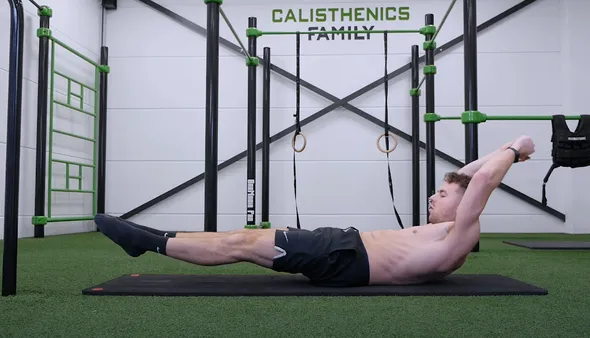
V. Conclusion
Calisthenics core workouts are a great way to build strength, stability, and endurance in your core muscles. They can be done anywhere, with no equipment needed, and they can be tailored to your fitness level. If you're new to calisthenics, start with the beginner exercises and gradually work your way up to the more challenging ones. Be sure to listen to your body and rest when you need to. With regular practice, you'll be amazed at how strong and defined your core can become.